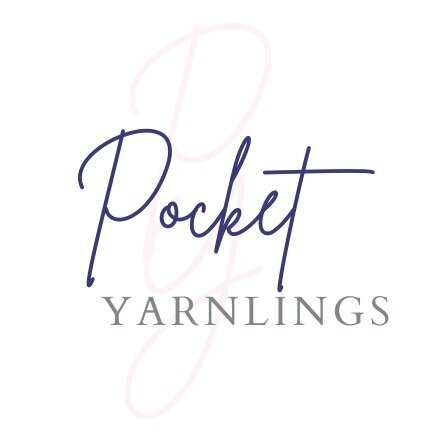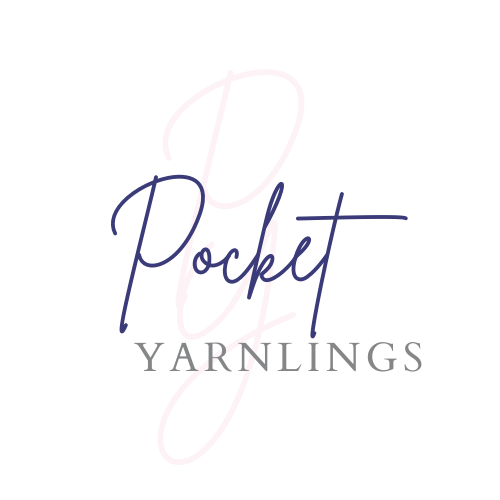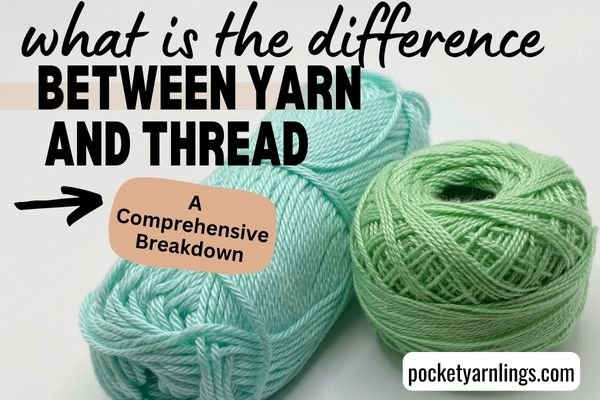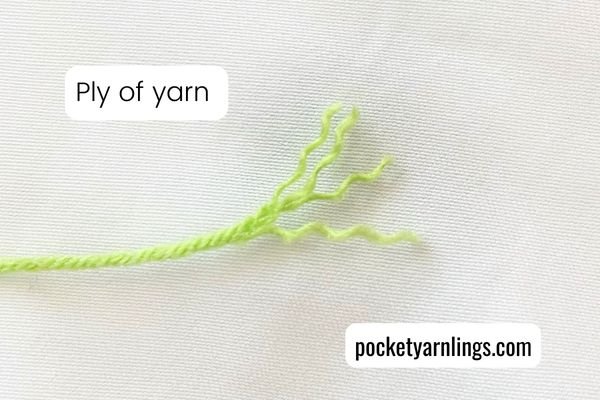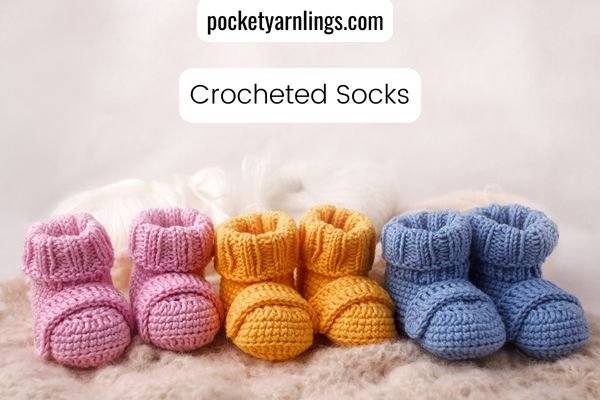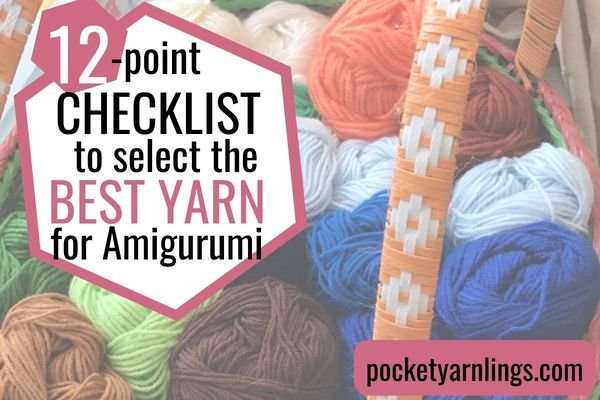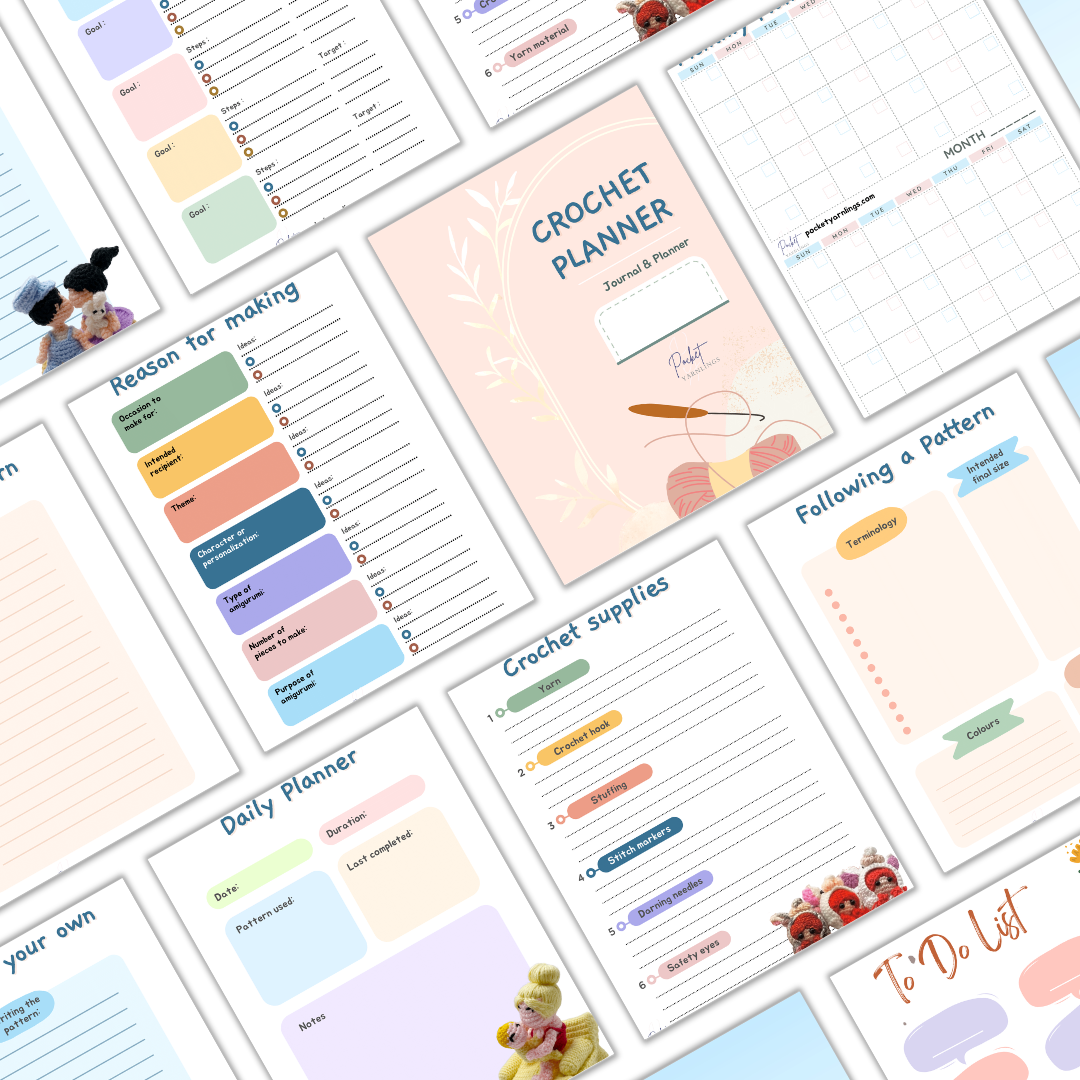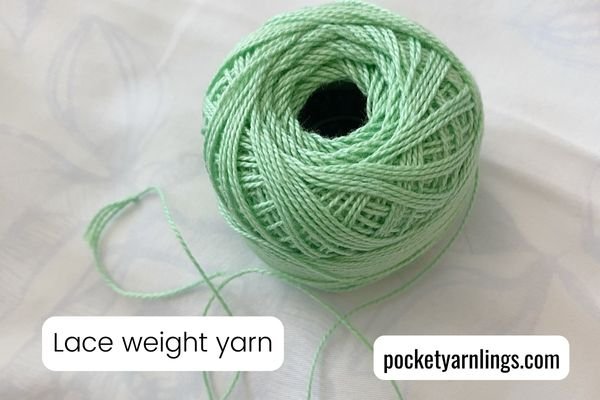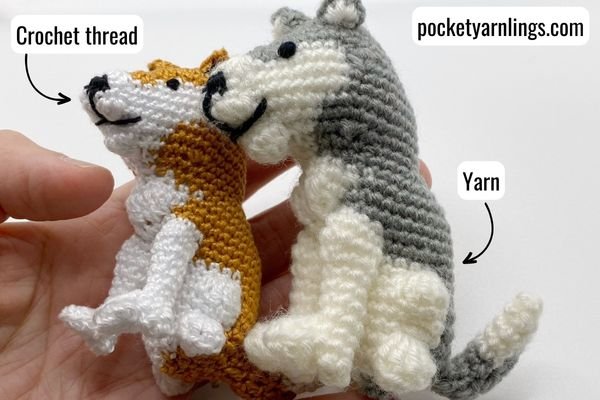What is the Difference between Yarn and Thread? - A Comprehensive Breakdown
When it comes to crafting, choosing the right materials can make all the difference in the outcome of your project. Yarn and thread are two commonly used materials, but they have distinct differences that make them better suited for specific projects.
Table of Contents Show
Understanding the differences between yarn and thread can help you choose the right material for your next project.
*This blog post may contain affiliate links. When you make a purchase through my link, I may receive a small commission at no additional cost to you.*
Understanding Yarn and Thread
Is thread also called yarn?
Yarn and thread are two different materials used for sewing and knitting. Yarn is a continuous strand of fibres that can be made from a variety of materials, such as wool, cotton, or acrylic. Thread, on the other hand, is a thinner strand of yarn that is used for sewing. While thread is made from yarn, not all yarn is suitable for use as thread.
Is thread made from yarn?
Yes, thread is made from yarn. However, the process of making thread involves twisting the yarn to make it stronger and thinner. This twisting process is called spinning, and it makes the yarn more durable and easier to work with. Once the yarn has been spun into thread, it can be used for a variety of sewing projects, such as hemming, quilting, and embroidery.
What is the difference between yarn count and thread count?
Yarn count refers to the thickness of the yarn used in a project. The higher the yarn count, the finer and thinner the yarn. Thread count, on the other hand, refers to the number of threads per square inch of fabric. It is commonly used in the textile industry to determine the quality and durability of fabrics.
Key Differences Between Yarn and Thread
When choosing between yarn and thread, it's important to consider the project you're working on. Yarn is best for larger projects, such as knitting a sweater or crocheting a blanket, while thread is better suited for smaller projects, such as sewing on a button or hemming a pair of pants.
Material Composition
Yarn and thread are both made of fibres, but they differ in the way they are constructed. Yarn is made by twisting fibres together to create a continuous strand. It can be made from a variety of materials, including wool, cotton, silk, and acrylic. Thread, on the other hand, is made by twisting multiple strands of yarn together. It is typically made from cotton, silk, or polyester.
Purpose and Use
Yarn is commonly used for knitting, crocheting, and weaving. It comes in a variety of thicknesses, making it suitable for a range of projects, from delicate lacework to chunky sweaters. Thread, on the other hand, is used for sewing and embroidery. It is typically thinner and stronger than yarn, making it ideal for creating seams and stitching designs onto fabric.
The type of material you use will also affect the final outcome of your project. For example, wool yarn is warm and cozy, while cotton thread is lightweight and breathable.
Strength and Durability
Thread is generally stronger and more durable than yarn. It is designed to withstand the stress of sewing and embroidery, and is less likely to break or fray. Yarn, on the other hand, is more prone to stretching and pilling, especially if it is made from natural fibres like wool or cotton. However, yarn can be more forgiving when it comes to mistakes, as it is easier to unravel and start over.
Types of Yarn
When it comes to knitting or crocheting, the type of yarn you choose can make a big difference in the final outcome of your project. There are many different types of yarn available, each with its own unique characteristics. In this section, we will discuss the three most common types of yarn: wool yarn, cotton yarn, and synthetic yarn.
Wool Yarn
Wool yarn is made from the fleece of sheep or lamb. It is a popular choice for knitting and crocheting because it is warm, durable, and comes in a wide variety of colours. Wool yarn is also very elastic, which makes it easy to work with and ideal for projects that require a lot of stretching, such as socks or hats.
One downside of wool yarn is that it can be scratchy and uncomfortable to wear. However, there are many different types of wool yarn available, some of which are softer than others. Merino wool, for example, is known for its softness and is often used in baby blankets and clothing.
Cotton Yarn
Cotton yarn is made from the fibres of the cotton plant. It is a popular choice for warm-weather projects because it is lightweight and breathable. Cotton yarn is also hypoallergenic, which makes it a good choice for people with sensitive skin.
One downside of cotton yarn is that it is not as elastic as wool yarn, which can make it more difficult to work with. However, cotton yarn is very durable and can be machine-washed and dried, which makes it a practical choice for many projects.
Synthetic Yarn
Synthetic yarn is made from man-made materials such as acrylic, nylon, or polyester. It is a popular choice for beginners because it is easy to work with and often less expensive than natural fibres. Synthetic yarn is also available in a wide variety of colours and textures.
One downside of synthetic yarn is that it can be less breathable than natural fibers, which can make it uncomfortable to wear in warm weather. However, synthetic yarn is often machine-washable and can be more durable than natural fibres, which makes it a good choice for projects that will be used frequently or washed often like amigurumi!
To learn more about different choices of yarn, check out this article on “12-point Checklist to Select the Best Yarn for Amigurumi”.
Types of Thread
When it comes to sewing, there are many types of thread available. Each type of thread has its own unique properties that make it suitable for different types of projects. Here are some of the most common types of thread:
Cotton Thread
Cotton thread is a popular choice for sewing because it is strong and durable. It is also easy to work with, making it a good choice for beginners. Cotton thread is available in a variety of weights, from lightweight to heavy-duty. It is also available in a range of colours, making it easy to find the perfect match for your project.
Polyester Thread
Polyester thread is another popular choice for sewing. It is strong and durable, making it suitable for a wide range of projects. Polyester thread is also resistant to shrinkage, which makes it a good choice for use in clothing. It is available in a range of colours and weights, making it easy to find the right thread for your project.
Nylon Thread
Nylon thread is a strong and durable thread that is resistant to abrasion and UV rays. It is a good choice for use in outdoor projects, such as camping gear or outdoor furniture. Nylon thread is also available in a range of colours and weights, making it easy to find the right thread for your project.
If you found this article useful, remember to share to Pinterest so that others might get inspiration from it too!
Free Crochet Planner Journal!
Click here to grab this 20-paged workbook and checklists that will help organize your creativity before you even start on your next crochet project! Or click on image on the left.
Choosing Between Yarn and Thread
When it comes to crafting, choosing the right material is important for achieving the desired outcome. Yarn and thread are two popular options, but they have different characteristics that make them suitable for different projects.
For Crocheting
Yarn is the go-to material for crocheting. It comes in a variety of colours, textures, and thicknesses, making it versatile for creating different types of projects. Yarn is also easier to work with than thread because it is thicker and has more give, making it easier to hold and manipulate.
For Sewing
Thread is the preferred material for sewing. It is thinner than yarn, which allows it to pass through the eye of a sewing needle. Thread is also stronger than yarn, making it suitable for holding together seams and stitching fabrics together. When choosing thread, consider the weight of the fabric you will be sewing and choose a thread that matches or complements it.
For Embroidery
Both yarn and thread can be used for embroidery, but the choice depends on the type of embroidery you will be doing. Yarn is better suited for surface embroidery, such as crewelwork and needlepoint, because it creates a raised texture on the fabric. Thread is better suited for counted thread embroidery, such as cross-stitch and blackwork, because it creates a flat texture on the fabric.
Crochet Thread
Crochet thread is a type of thread that is specifically designed for use in crochet projects. It is a lightweight thread that is available in a range of colours and weights. Crochet thread is also available in different materials, such as cotton and nylon.
What are the differences between crochet thread and yarn?
Crochet thread and yarn are both used in making crochet projects. However, they differ in terms of weight, thickness, and fibre content. Crochet thread is thinner and lighter than yarn, making it ideal for creating delicate and intricate designs. Yarn, on the other hand, is thicker and heavier, making it suitable for larger and more durable projects.
Can you use cotton thread for crochet?
Yes, cotton thread can be used for crochet. Crocheting with cotton thread offers unique advantages and is popular for various projects. Keep in mind that working with cotton thread can require a smaller crochet hook and more precision due to its fine nature.
Additionally, the gauge and tension may vary compared to working with thicker yarns. It's always a good idea to consult your specific pattern and make any necessary adjustments for the chosen thread.
Overall, cotton thread can be an excellent choice for delicate and detailed crochet work, providing durability, absorbency, and a distinct texture to your projects.
Can I use sewing thread for crochet?
It is not recommended to use sewing thread for crochet projects as it is not strong enough to handle the tension and weight of the yarn. Sewing thread is designed for sewing fabrics together and is not suitable for crochet or knitting projects.
Which thread is best for crochet?
The best thread for crochet depends on the specific project and the desired outcome. Here are some commonly used threads for crochet:
Cotton Thread
Cotton thread is a popular choice for crochet projects. It is available in different weights and is well-suited for creating delicate and detailed work like doilies, lace, and fine garments. It offers durability, a smooth finish, and good stitch definition.
Crochet Thread
Specifically labelled as "crochet thread," this type of thread is designed for crochet projects. It comes in various thicknesses and is often used for creating intricate lacework, edgings, or small decorative items.
Mercerized Cotton
Mercerized cotton thread has been treated with chemicals to increase its lustre, strength, and ability to take dye. It is known for its smooth finish, vibrant colours, and durability. Mercerized cotton is commonly used for tablecloths, home decor, or apparel.
Metallic Thread
Metallic thread adds a touch of shimmer and sparkle to crochet projects. It is typically combined with other yarns or threads to create decorative accents or add a festive touch to holiday-themed items.
Synthetic Threads
Synthetic threads, such as nylon or polyester, offer different qualities like durability, stretch, or colourfastness. They can be used for a variety of projects ranging from functional items to fashion accessories.
Ultimately, the best thread for your crochet project depends on factors such as the desired appearance, stitch definition, texture, and the purpose of the final item. It's important to consider the specific requirements and recommendations of the pattern you're using, as it may suggest a particular thread type or weight for optimal results. Experimenting with different threads can also open up new possibilities for your crochet creations.
Can you use cotton thread for crocheting amigurumi?
While cotton thread can be used for crocheting amigurumi, it may not be the most common choice for this type of project. Amigurumi are stuffed, three-dimensional crocheted toys, and they are typically made using thicker yarn, such as acrylic or cotton yarn in worsted weight or heavier.
Using cotton thread for amigurumi can present some challenges:
Size: Cotton thread is much finer than regular amigurumi yarn, which means you would need to use a very small crochet hook to achieve the same tight stitches required for amigurumi. This can be more time-consuming and may strain your hands.
Sturdiness: Amigurumi toys need to be durable to withstand play and handling. Cotton thread might not provide the same level of sturdiness and structure as thicker yarn, potentially resulting in a more delicate finished product, which might not be the best for your toddler or preschooler to play with!
Limited Colour Variety: While cotton thread does come in a range of colours, it may not offer the same variety as thicker yarn options, limiting your colour choices for creating unique amigurumi designs. Alternatively, you could make do with basic colours and not have too many variations of the same base colour.
If you're set on using cotton thread for amigurumi, it's important to take extra care while crocheting to ensure your stitches are tight and even. However, most crocheters prefer using thicker yarn like acrylic or cotton yarn in worsted weight or bulky weight for making amigurumi due to its ease of use and ability to create sturdy and huggable toys.
Having said that, I have tried using cotton crochet thread for making amigurumi and it does result in a nice little, smaller miniature effect on your final projects. I have known some crocheters who love to use this size of thread to make little dangling earrings!
Conclusion of Differences between Yarn and Thread
In summary, choosing between yarn and thread depends on the project you are working on. Both have their own advantages and disadvantages, and it is important to consider these before making a decision.
If you are working on a project that requires durability and strength, thread is the way to go. It is perfect for sewing buttons, zippers, and other fasteners onto clothing or bags. It is also great for embroidery work that requires intricate details.
On the other hand, if you are working on a project that requires softness and flexibility, yarn is the better option. It is perfect for knitting or crocheting blankets, scarves, and other clothing items. It is also great for creating decorative items such as pom-poms or tassels.
If you found this article useful, remember to share to Pinterest so that others might get inspiration from it too!
When it comes to choosing the right yarn or thread for your project, it is important to consider the weight, fibre content, and colour. Make sure to read the label carefully to ensure that you are selecting the right material for your project.
Overall, whether you choose yarn or thread, both are essential tools for any crafter. With the right materials and techniques, you can create beautiful and functional items that will last for years to come.
Free Crochet Planner Journal!
Click here to grab this 20-paged workbook and checklists that will help organize your creativity before you even start on your next crochet project! Or click on image on the left.
Related articles
Yarn Weight Chart for Crocheting: Ultimate Comprehensive Detailed Guide
12-point Checklist to Select the Best Yarn for Amigurumi
Crochet Hook Size Chart for Amigurumi: Absolutely Everything You Need to Know
Fingering Weight Yarn for Crocheting – Comprehensive Guide and Where to Buy
Sport Weight Yarn for Crocheting– Comprehensive Guide and Where to Buy
DK Weight Yarn for Crocheting – Comprehensive Guide and Where to Buy
Worsted Weight Yarn for Crocheting – Comprehensive Guide and Where to Buy
